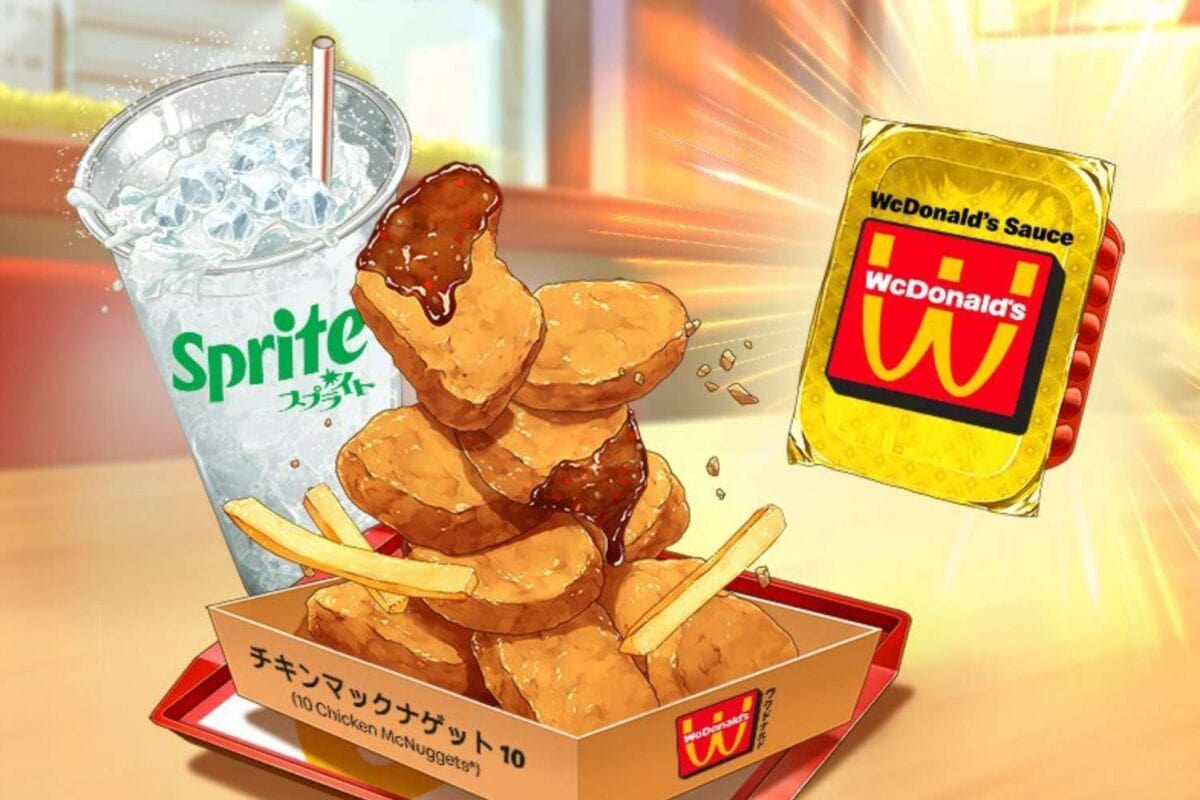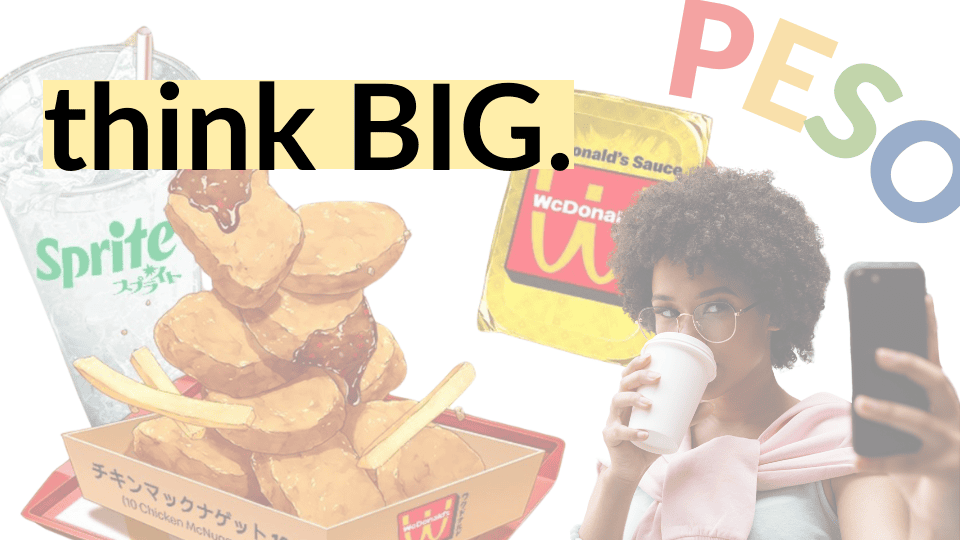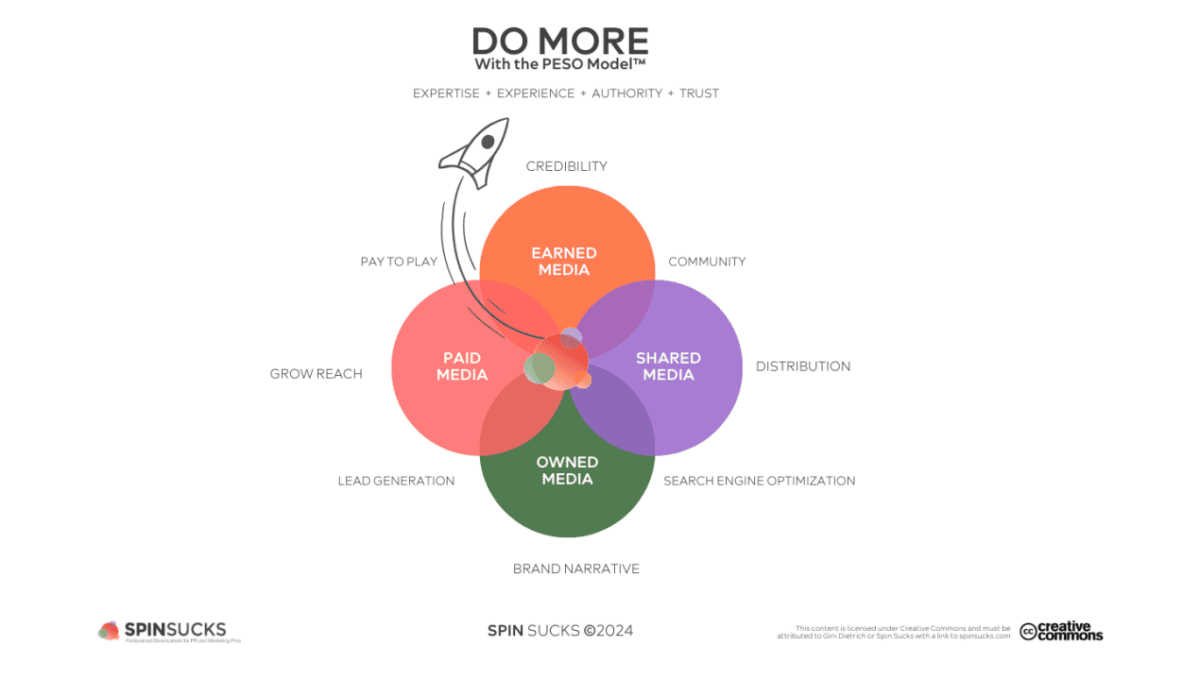This month’s blog is all about identifying micro-moments + fan truths, the heightened need for integrated campaigns, influencer marketing measurement and inclusive language reminders.
Bold Brand Ideas: Micro-moments > seasonal stunts. Just ask McDonald’s
McDonald’s is pivoting from seasonal stunts to focus on fan truths. They’re placing emphasis (read: marketing dollars) on connecting brand moments with subculture. Their campaigns and day-to-day presence lean into customers’ interests, such as celebrities, TV/movies, nostalgia, music and fashion.
Most recently, McDonald’s is connecting with the anime enthusiast community. They recognized an opportunity to lean into the 1980’s anime, “WcDonald’s.” The campaign involves a new sauce and manga-inspired packaging, as well as anime episodes available on a special McDonald’s website.
We’re ba da ba ba ba lovin’ McDonald’s shift. It has an authentic and nostalgic tie to the brand (WcDonald’s). It doesn’t try to be something for everyone, thereby creating an intimate and close connection to core segments.

The takeaway? More brands should invest in regular micro-moments vs. seasonal campaigns. Create a strategy that infuses your product/service into your consumers’ everyday lives. Invest in more valuable + more frequent content vs. one-off grandiose campaigns. Toss your calendar (kidding, kind of) and get in the comments sections. What are consumers talking about? What are the pain points in their daily lives? What mini moments bring them joy? Build a nimble strategy based on those real-time insights.
You can learn a lot from social about how + when to show up for consumers. Regularly scan your brands’, competitors’ and relevant thought leaders/influencers’ engagement, with goals to:
- Know and connect with your audience: What are the things that matter to your audience? Try the psychology tool of asking five “whys” to get to the root consumer need or interest. The “five whys” technique encourages people to identify an insight and ask “why is that” five times to generate better understanding.
- Identify timing + solution: When is a need or interest in our products/services at its peak? Try to get as granular as a day of the week or time of day.
- Maintain authenticity + relevance: Don’t force the connection. Micro-occasion + subculture marketing are not only about understanding your customers’ routines and what matters to them, but also ensuring those topics are authentic and relevant to your brand.
- Leverage existing engaged communities: Subcultures like fan bases and interest groups have an existing affinity your brand can tap. Reference the previous bullet to ensure your approach won’t have the opposite effect on these often strong-opinionated groups.
Industry Insights: The updated PESO Model underscores the ROI of integrated campaigns
Before discussing the PESO Model evolution, it’s important to understand its foundation. The PESO Model was launched in 2014 via the book Spin Sucks, a guide for effective + ethical communication. It refers to the four types of media (paid, earned, shared, owned) and is widely used by marcom pros building communication strategies.
The creator of the PESO Model, Gini Dietrich, recently announced its refresh. Dietrich says the evolution is focused more on strategic outcomes vs. a tactical mix.
The refreshed version underscores the importance of an integrated strategy. It shows that, when paid, earned, shared and owned media are used together, brands better demonstrate expertise, experience, authority and trust (or, E–E-A-T).
“When you use an integrated PESO Model program, you build credibility, reputation, and authority, increase your website’s authority, and improve search rankings. It helps you demonstrate experience and expertise while you build authority and trust.” -Dietrich
The emphasis on integration is critical in today’s media landscape and consumer content habits. With shrinking newsrooms, a million and one social platforms, and even more influencers, brands are fighting hard for audience attention. Ensuring your message reaches the right audience, on the right platform requires a “one-two punch” approach.
The refocus from tactics to outcomes is also critical as CEOs continue to question marketing + PR’s value. When all tactics are working under the same strategy and for the same goals, it’s easier to measure and communicate ROI.
Speaking of goals…
Goals: How Earned Media Value can validate influencer campaigns’ ROI
The influencer marketing industry is worth nearly $24B (and is growing). The continued investment is not surprising, as brands report earning $5.78 for every dollar spent on influencers.
Despite this growth, many brand marketers struggle to measure influencers’ ROI. According to CreatorIQ’s 2024 Trends Report, 43% of brand respondents reported difficulty measuring performance. This measurement challenge was one of the top roadblocks to investing personnel, time and money into the tactic.
Adding fuel to the fire, marketers are often challenged to compare influencer results to paid media KPIs – when the two aren’t apples to apples. Influencers embody the best of earned and paid. They can tell a brand story without seeming overly salesy. Their outputs are guaranteed (like paid) but they come across more genuine and credible (like earned). Therefore, using the same paid KPIs for influencers doesn’t do the tactic justice.
So… how do you accurately measure the value of influencers using KPIs that PR, marketing and digital teams all understand?
Of course you can consider the obvious metrics of impressions, reach, number of engagements (e.g., comments, shares, saves), website traffic and even sales. That said, today, more and more marketers are also measuring influencers’ earned media value (EMV). EMV boils down to the value brands receive from the buzz and attention an influencer generates on their organic posts. EMV calculates how much it would cost to get the same exposure through paid advertising channels.

There are two primary ways of measuring EMV:
- Multiply the number of post impressions by the cost per thousand impressions (CPM) of a similar paid media campaign: Impressions x Cost per 1,000 (CPM). That gives you a basic idea of how much it would’ve cost if you went the traditional advertising route.
- The second method gets a bit fancier. It factors in other earned variables (like engagements): Impressions x CPM x adjustment variable. We use a tool to calculate multiple factors in our campaign EMVs.
An important caveat to note: audience size plays a significant role in EMV generation. While calculations don’t directly consider follower count, content from established creators often yields higher EMV due to increased engagement opportunities. However (and this is an important “however”) we know that micro niche creators often yield stronger results than their macro counterparts. In fact, recent AMA research found that creators with smaller followings generated stronger ROI. This ROI can be tied to their quality content and follower relationships – which come with a more affordable price tag.
We want to hear from you: what metrics matter most to your teams? How are you measuring and reporting the value of influencers?
DEI Download: Words matter: Inclusive language reminders for appropriate storytelling
At our core, marketers + PR pros are storytellers. We’re often tasked with crafting compelling stories for our clients and/or brands. Often, these stories aren’t our own or don’t match our lived experiences. We must remain mindful of our language when representing communities outside our own.
In a recent Adweek article, God-is Rivera, chief content officer at Essence Ventures, spoke about the uncomfortable but necessary need to accurately and appropriately identify + refer to diverse communities.
“We must look at those who hold power within society and our institutions and recognize that systems and actions have been built and maintained to withhold and strip that power away from other groups. Marketers must not forget this every time we speak of these communities, and we must speak the truth of what has created our reality every time we address rectifying it.”

We have an opportunity to be intentional about the words/language we use, especially when advocating for marginalized communities. In the end, words matter, and it’s our job to get them right.
Check out these inclusive language guides and resources for more guidance:
Fill out the form below to be notified when our next blog publishes.







